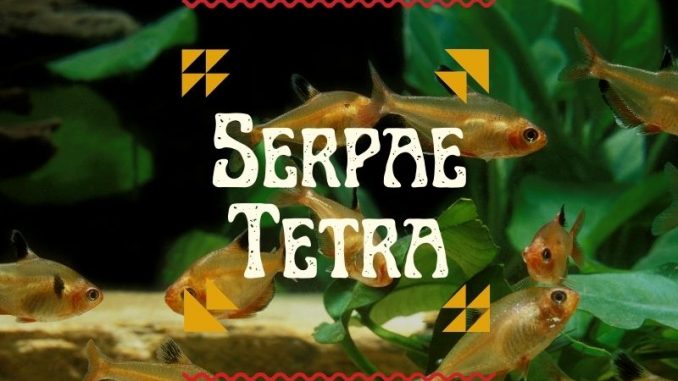
The serpae tetra is a tropical freshwater fish belonging to the characin family.
Due to its ease of care and striking looks, the serpae tetra, like most tetra fish, is a popular species for beginner fish keepers. Serpae tetras live in schools of six or more and boast a beautiful red color and a trapezoidal shape. These peaceful fish get along well with their tank mates and are ideal for those looking for a low-maintenance fish.
When given the right environment, serpae tetras will liven up your tank with their playful attitude.
TABLE OF CONTENTS
Serpae Tetra Facts & Overview
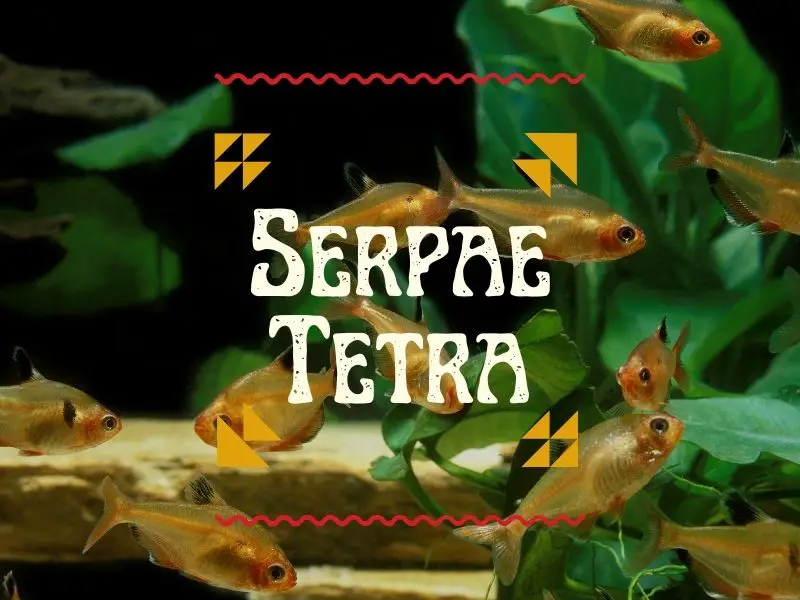
| Category | Rating |
| Care Level: | Easy |
| Temperament: | Peaceful |
| Color: | Reddish-brown |
| Lifespan: | ~5 years |
| Size: | ~1.75 inches |
| Diet: | Omnivore |
| Family: | Characidae |
| Minimum Tank Size: | 20 gallons |
| Tank Set-Up: | Freshwater, plants, rocks, caves |
| Compatibility: | Peaceful, schooling species |
The serpae tetra is scientifically known as the Hyphessobrycon eques. It can also be referred to as the red tetra, red minor tetra, Callistus tetra, or jewel tetra.
Native to the Amazon River basin, these colorful fish are commonly found in Brazil, Peru, Argentina, Bolivia, and Paraguay. There, serpae tetras spend their time in slow-moving backwaters, hiding from potential predators. In contrast, when kept in captivity, serpae tetras are happy to spend most of their time out in the open.
The average lifespan of the serpae tetra is between 5-7 years, though some may live much longer. Environment, diet, and the water conditions the fish are kept in will each play a role in its longevity.
These fish are easy to find in pet stores. Serpae tetras are one of the more affordable fish to purchase, costing an average of $1.99 to $2.99 each. As they are schooling fish, you will commonly find them sold in packs.
Appearance & Behavior
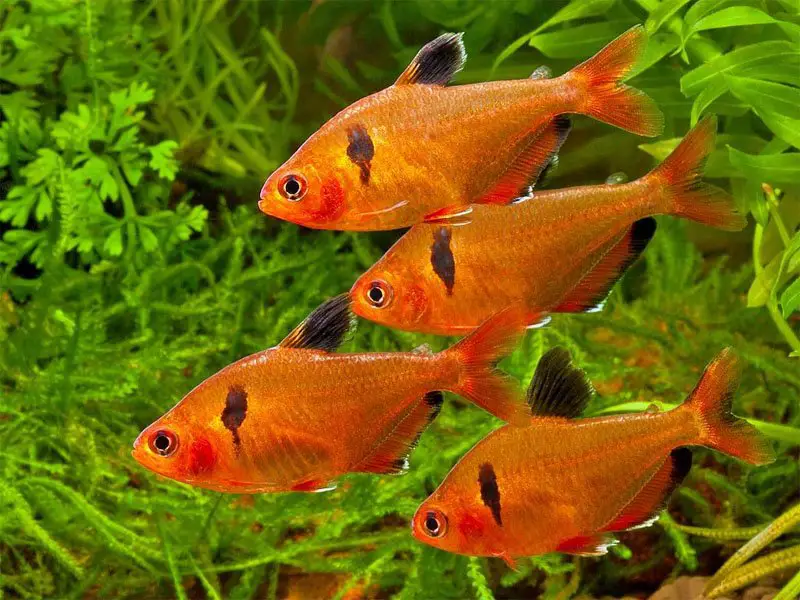
The serpae tetra is a deep red color with a tall, flat body. It has a black, distinctive comma-shaped marking located behind the gills. All the serpae tetra’s fins are red beside the dorsal fin and anal fin. The dorsal fin is predominantly black in color with white edging. The anal fin has black edging and a sprinkling of white on its leading tip.
As they age, serpae tetras start to fade in color. Females are not as colorful as males and boast a plumper bodies. In rare cases, it is possible to produce long-finned serpae tetras when breeding.
In captivity, you can expect serpae tetras to grow to around 1.75 inches long. In rare cases, they may reach 2 inches in length. They are a subspecies of blood tetras and can be difficult to distinguish from other species. The serpae tetra shares a strong resemblance with the red phantom tetra, scientifically known as the Hyphessobrycon swegles.
Typical Behavior
Serpae tetras are peaceful fish that get along well with several other species. They are most confident in larger groups, spending time exploring their surroundings. Their behavior changes when there is other Serpae tetra around.
These fish mostly spend their time swimming around the middle and lower part of the tank. They have a distinctive swimming pattern that sees them darting through the water in a jerky pattern.
Although the serpae tetras are largely peaceful fish, they can show a little aggression to long-finned, slow-moving fish such as bettas or angelfish. If aggressive behavior is identified, you could try keeping your serpae tetras in larger groups. The fewer serpae tetras you keep together, the less confident they will be.
Any aggression these fish do show tends to occur during feeding time. Placing food in several locations in the tank or using feeding rings can help to reduce the problem.
Serpae tetras sleep when it gets dark. Fish that are awake after dark have often been seen by their owners, swimming in a horizontal direction.
Serpae Tetra Care
Serpae tetras are one of the easiest fish to care for. This makes them ideal for beginners, though care should be taken when adding them to newly set up tanks. These fish are highly susceptible to changes in water parameters.
To help make your serpae tetras feel at home, try to replicate their original Amazon habitat. Blackwater extract or peat can help to mimic the acidy, soft water they are accustomed to. Keep any lighting subdued and ensure the flow of water in the tank is slow-moving.
Providing the aquarium is well maintained, the serpae tetra should remain relatively healthy. It is a hardy species that rarely suffer from the disease. In rare cases, a serpae tetra may suffer the following health issues:
- Bacterial infections
- Skin flukes
- Parasite infestations
- Bacterial disease
- Ichthyobodo infection
It would be worthwhile reading up on common aquarium diseases. This will ensure you can identify the signs of disease early.
The key to keeping serpae tetras healthy is to reduce their stress levels. You can do this by providing plenty of hiding places such as caves and long plants. Choosing tankmates carefully will also help to maintain a calmer tank environment.
As the serpae tetra is an omnivore, it will eat a variety of foods. The ideal diet for this fish is a mixture of high-quality flakes and live foods. Brine shrimp and bloodworms can be fed as a treat, and they should be fed several times each day.
Habitat and Tank Requirements
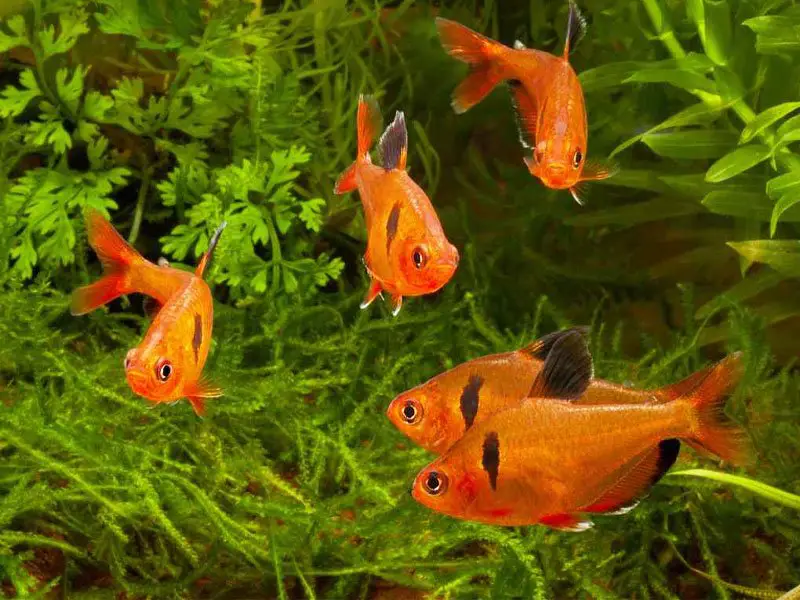
How you set up your serpae tetra’s habitat will make a huge difference to its health and happiness. In the wild, serpae tetras live in black water. You can replicate this by adding aquarium-safe peat. Serpae tetras require specific water parameters to stay healthy, meaning you can’t simply add them directly to a new setup. Instead, you’ll need to make sure the tank has been cycled, and the PH, ammonia, and nitrate levels are ideal.
Tank Conditions
The ideal tank size for serpae tetras is 20 gallons for approximately six fish. They are small, but they love to swim and explore in captivity. They also require the following water parameters:
- Water temperature: Around 72°F to 79°F
- PH levels: 5.0 to 7.8
- Water hardness: 5 to 25 dGH
To recreate the serpae tetra’s natural environment, include caves, decorations, and plants in the setup. Plants are especially important as they provide shelter, as well as a snack for the serpae tetra.
As these fish don’t like to live in a bright environment, you will want to focus on adding low-light aquarium plants to the tank. The best plants to include are Myriophyllum and Java moss, which should be placed around the edges of the tank in clusters. Be wary not to add too many plants otherwise your fish won’t have enough swimming space.
In terms of tank equipment, you will need a good filtration system. The tank needs to be well cycled to maintain optimal conditions. Make sure it isn’t too powerful, however, as this could speed up the flow of water. You should read up on how to cycle a fish tank if you are new to fishkeeping.
Tank Mates
As the serpae tetra is a peaceful fish, it can live harmoniously with several other species. Ideal tank mates include other peaceful and fast-moving species, as the serpae tetra is known to nip the fins of slower-moving fish.
Some of the best tank mates you can include in your setup include:
- Bottom-dwelling catfish
- Cardinal tetras
- Danios
- Bolivian ram cichlid
- Bristlenose pleco
There have been instances where aquarium snails have worked well in a serpae tetra setup. However, most experts recommend against adding freshwater snails as potential tank mates. Also, avoid adding any larger fish as they could eat the serpae tetra.
Diet and Feeding
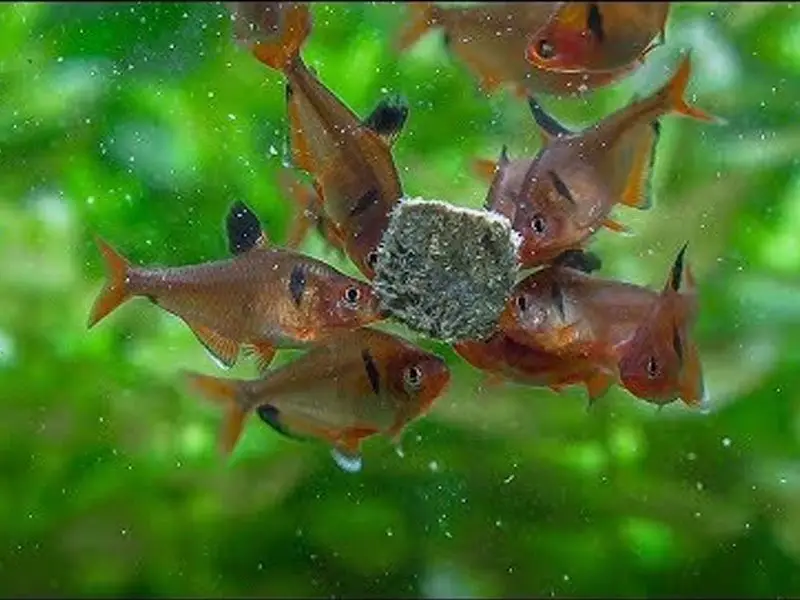
In their natural habitat, serpae tetras eat a varied diet of insect larvae and plant matter. In captivity, these omnivores are happy to eat practically anything you give them.
The foundation of a good diet for these fish is high-quality flakes or pellets. This can then be supplemented with high protein foods, such as live or frozen bloodworm and brine shrimps.
You will need to feed your serpae tetras several times each day. Only provide them with as much food as they can eat in a few minutes. You don’t want to leave any uneaten food left in the tank for long periods of time, as it could contaminate the water. To prevent feeding them too much, start by adding a little food at a time. If they eat it all, add a little more until they start to lose interest in the food.
Breeding
Serpae tetras are one of the easiest fish to breed. You’ll need to keep them in pairs, or in groups with an equal number of males and females. It is also recommended that you set up the ideal environment for breeding.
While serpae tetras can live in water with up to 25 dGH, for optimal breeding conditions the water should be no higher than 8 dGH. You’ll also want to keep the temperature at 80°F. Feed the tetras a varied nutrient-packed diet. This will give the males a more vibrant look, making them more attractive to potential mates.
Serpae tetras are egg-laying fish, capable of laying hundreds of eggs each time they breed. They scatter their eggs over spawning mop and plants. As soon as you notice any eggs in the tank, you will need to remove the adult fish and turn off any lighting. Adult tetras will eat the eggs if you leave them in the tank.
It only takes a couple of days for the eggs to hatch. For the first few days, they will feed on their own yolk sack. After that, you can feed them brine shrimp that is freshly hatched, alongside crushed flakes. Add them to your main tank once they are big enough to take care of themselves.
You will have the most success if you breed your serpae tetras in a separate tank. Watch out for the males chasing the female fish around. This signals that the female is about to scatter her eggs, ready for the male to fertilize them. Once they have been fertilized, it’s time to remove the adults.
Should You Get a Serpae Tetra for Your Aquarium?
Serpae tetras are a fantastic option for beginners, as well as anyone looking for a peaceful, colorful fish. Easy to care for, they are best kept in groups of six or more. If you plan on adding larger, or smaller and slower fish to the aquarium, these tetras won’t be suitable tank mates.
When you provide these playful fish with an optimal environment, they will stay happy and healthy for up to five years. The serpae tetra is a hardy fish that will keep you entertained for hours.


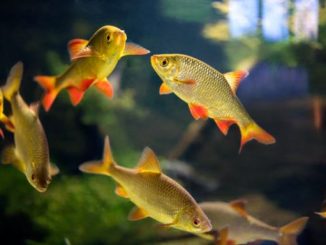
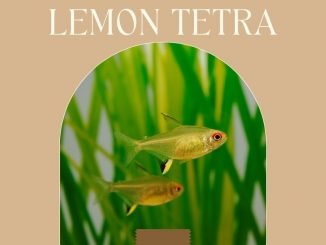
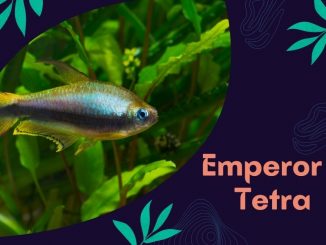
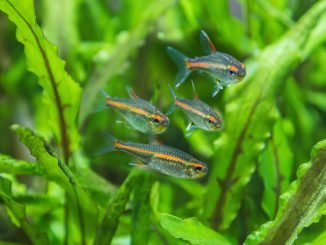
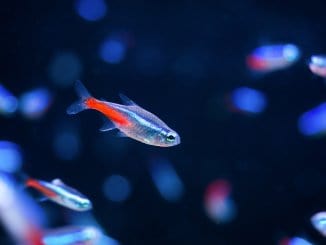
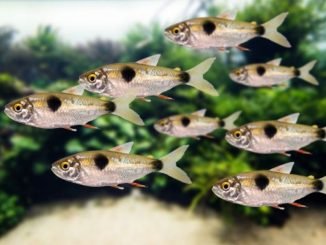
Be the first to comment